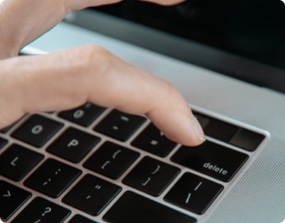Computer health
Follow These Steps if You’ve Been Hacked
Even though technology has made many aspects of our lives easier, it often comes with a price.
More of us are working from home and increasingly conducting personal business online. That also means we risk an increasing threat of being a victim of cybercrime.
Whether through our social media accounts, public Wi-Fi or a voice-activated device, the more we’re online, the easier it is for us to be hacked. Our bank accounts, personal identification numbers, tax returns, contact information for loved ones and other valuable data can be accessed more easily if we’re not careful.
How to know if you’ve been hacked
With all of us doing so much online these days, it can be challenging to notice whether we’ve been hacked. Whether you’re online all day or just a few hours a week, there are a few key signs to look out for.
- Your online searches are redirected to an unrelated or unwanted site
- An online password suddenly doesn’t work anymore
- You’ve noticed unauthorized activity or missing funds in an online account
- You receive constant or random pop-ups on your browser
- Unfamiliar browser toolbars appear that you didn’t install
- Software ends up on your device that you didn’t install
- Fake warning messages or alerts pop up for protection software
- You receive messages that files are encrypted on your device
- Your contacts receive messages online or on social media that you didn’t send
- Anti-virus protection software is disabled without your knowledge
- Your mouse is randomly opening software or files without you directing it
Any of these scenarios can be scary if they happen to you. That’s why it’s essential to know what security measures to take, so you can help mitigate any potential damage.
What to do if you’ve been hacked
Having your information stolen or your privacy invaded can be nothing less than unsettling. If you have been hacked, you will need to take action as soon as suspicious activity is detected. By acting swiftly, you can help prevent the maximum amount of damage.
Here are some steps you should take if you discover you’ve been hacked:
- Contact the business behind the account that’s been hacked – Once they are aware of the problem, they can halt any further activity, especially if it’s a financial account. They will likely have you change your password, and their process may include changing your account number. Be sure to follow all their policies and procedures in a timely manner to keep risk to a minimum.
- Change all your passwords – Yes, it may seem like an impossible task, but it is a mandatory one. The main reason for doing this is that if one of your accounts is hacked, there’s no way to know for sure if others have been as well. Resetting your passwords will help prevent additional risks to your valuable data. Having a password manager like LastPass can help make this process much faster and easier.
- Scan all your devices – Download a reputable anti-virus program that will scan your devices for malware or computer viruses. They should also be capable of detecting phishing programs or those that log keystrokes. Be wary of any free programs, as many are actual viruses in disguise.
- Review all financial accounts – Check all the activity on your financial accounts, especially the ones you don’t check or use often, such as retirement or investment accounts. Thankfully, most financial institutions offer fraud protection where you aren’t responsible for unauthorized activity. Be sure to also check for any changes to your contact information. If you suspect a financial account has been hacked, change your password immediately and request a change of account, card numbers or PINs.
- Check your credit report – If a hacker sets up a new account in your name, chances are that you won’t notice until you check your credit history. If you detect suspicious activity, contact the credit reporting service immediately, and if possible, contact the company the account is set up with. It’s also a good idea to utilize a credit monitoring service like Experian CreditCenter™ to help remove the activity and prevent any new fraudulent activity.
- Always choose two-factor authentication - Many websites offer two-factor authentication, which requires you to provide a second form of identification in addition to your username and password. It will usually be in the form of sending a code to your phone or email to verify your identity. It only takes a few extra minutes, but it adds an extra layer of protection to your accounts, so it’s well worth your time.
- Make your contact list aware of the situation – While it may not be the easiest conversation, people in your circle should know your information has been hacked. If you have their information on a device, their data could be at risk as well, and they need to enact their own security precautions. It will also be helpful for them to be aware of the potential to receive messages that appear to be from you that you didn’t send.
The most important thing to remember is that you can’t completely prevent your information from being hacked, but you can take precautions to reduce risk.
One of the best ways to help prevent your data from being hacked is by having anti-virus protection software in place. AOL has a variety of subscriptions to help keep your online activity secure. AOL Tech Fortress helps block dangerous malware and today’s emerging threats to your online security. Another option is Data Secure by AOL, which takes a comprehensive approach to help keep your sensitive data from online threats.
Whatever option you choose to protect your valuable data, it’s best to have something in place now rather than waiting until it’s too late. It’s also a good idea to schedule regular checks of your information to stay on top of any potential risks.
Published on 07/12/2023


